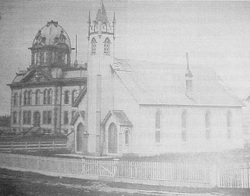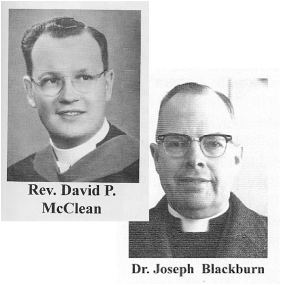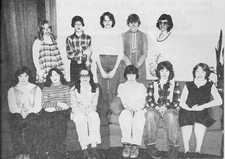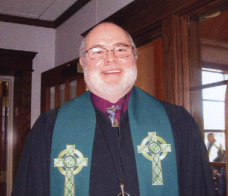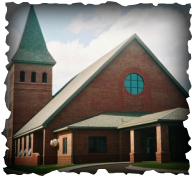Our History
IT BEGINS
Our church has a long history in Sault Ste. Marie. It began in October 1823 when Robert McMurtrie Laird, a young divinity student was sent here by the American home Missionary Society to minister to the needs of the soldiers at the newly created Fort Brady and to answer a call sent by Henry R. Schoolcraft to send a missionary. Mr. Laird was unhappy with his surroundings and his congregation as it seemed they would rather imbibe than attend services. Before leaving the following spring he united Henry Schoolcraft and Jane Johnson in marriage. Laird is quoted in his reports for the following: "If any other community on earth needed religion more than Sault Ste. Marie did at that time, no one knows its location."
The American Home Missionary Society tried again in 1831 when they sent Rev. Jeremiah Porter to the area. Rev. Porter stayed with Rev. Abel Bingham, the Baptist missionary, until 1832. At that time, Mrs. John Johnson had a small church constructed for him near the south east corner of the Johnson property. In 1833 he was offered the chance to move to Chicago with the Fort Brady soldiers and he accepted. He established the first Presbyterian church in Chicago where he stayed for the rest of his career.
The American Home Missionary Society tried again in 1831 when they sent Rev. Jeremiah Porter to the area. Rev. Porter stayed with Rev. Abel Bingham, the Baptist missionary, until 1832. At that time, Mrs. John Johnson had a small church constructed for him near the south east corner of the Johnson property. In 1833 he was offered the chance to move to Chicago with the Fort Brady soldiers and he accepted. He established the first Presbyterian church in Chicago where he stayed for the rest of his career.
A CHURCH IS BORNThe next stage in our history begins in 1853 when Charles T. Harvey of the St. Mary's Fall Ship Canal Company requested a missionary once again from the American Home Missionary Society. They sent William McCullough. With the acceptance of a petition to create a Presbyterian Society, the church here became the first formally organized church in the Upper Peninsula. Harvey, the builder of the first lock in the Soo Locks, purchased a lot where the present day Court House Annex stands on the corner of Maple and Court and, together with the church members and Harvey's construction firm, built a church at that location. Construction was completed in 1854 and things were going very well until McCullough became ill with pneumonia and died. Suddenly everything was put on hold again. Several supply ministers were sent in an effort to maintain the congregation, but by 1860 there were only 6 members left.
|
REV. EASTERDAY
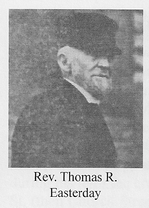
In 1864, the Sault church hired a person who was to become its most famous minister, Rev. Thomas R. Easterday. Having found the climate suitable to his health, Easterday applied for the church position and was hired as a stated supply minister. Though he graduated with a divinity degree from a Lutheran college, in 1865 he was accepted as a full fledged Presbyterian minister.
Easterday came to a 10-year-old church that hadn't had a full time minister since its first year of existence. The church grew rapidly under his leadership as he was considered quite liberal. He was known to baptize, marry, or bury just about anyone. By the time he passed away he claimed to have performed at least 3,500 marriages. Around 1872 Easterday proposed to the congregation that they rebuild the church. A tower was raised and new pews put in place to replace the plank benches. One of these pews survives and is located in the narthex of our current church. Rev. Easterday's ministry ended abruptly in February 1882 when he suffered a stroke at the age of 45. He and his family moved to Missouri for his health. The church had grown to a population of 200 during his years of service.
After two years, the Easterday family returned to the Sault and remained for the rest of their lives. Rev. Easterday remained a very active member of the local society and the entire city had a day of mourning for his funeral when he passed away in 1927. Easterday Avenue was name in his honor.
Easterday came to a 10-year-old church that hadn't had a full time minister since its first year of existence. The church grew rapidly under his leadership as he was considered quite liberal. He was known to baptize, marry, or bury just about anyone. By the time he passed away he claimed to have performed at least 3,500 marriages. Around 1872 Easterday proposed to the congregation that they rebuild the church. A tower was raised and new pews put in place to replace the plank benches. One of these pews survives and is located in the narthex of our current church. Rev. Easterday's ministry ended abruptly in February 1882 when he suffered a stroke at the age of 45. He and his family moved to Missouri for his health. The church had grown to a population of 200 during his years of service.
After two years, the Easterday family returned to the Sault and remained for the rest of their lives. Rev. Easterday remained a very active member of the local society and the entire city had a day of mourning for his funeral when he passed away in 1927. Easterday Avenue was name in his honor.
THE CHURCH CONTINUES
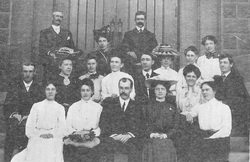
Sunday School teachers - early 1900's
Between 1882 and 1886, the church was led by Alexander P. Danskin, a stated supply minister. During this time, the congregational numbers began to decline and the Presbytery decided to bring in another full time minister.
In 1886, Rev. Harlan Page Corey was hired. While here, the Ladies Aide Society was formed. This group flourished until 1948 when it became part of the Women's Association, and subsequently the Presbyterian Women. Due to poor health, Corey moved to Indiana in 1890. With Rev. Corey, we also started the Christian Education history of our church. For over 120 years there has been an organized Sunday School for both children and adults. Depending on the minister, economic times, and congregation size, the "church" school has been large and small.
Rev. George W. Luther arrived the same year that Corey moved on, but he left again in December 1894. It is believed that there was dissatisfaction with him from the congregation as it is noted in the Session notes that members of the congregation had requested congregational meetings to discuss the pastor on several occasions. During this time, the congregation acquired a parcel of land on Bingham Ave. to build a new church. It is noted that this was done without the support of the minister.
The next minister was C.P. Bates. He arrived in May of 1895. During his ministry, a Women's Missionary Society was begun and ran until it too became part of the Women's Association. Bates resigned December 1901 while preliminary work had begin on a new church building.
In 1886, Rev. Harlan Page Corey was hired. While here, the Ladies Aide Society was formed. This group flourished until 1948 when it became part of the Women's Association, and subsequently the Presbyterian Women. Due to poor health, Corey moved to Indiana in 1890. With Rev. Corey, we also started the Christian Education history of our church. For over 120 years there has been an organized Sunday School for both children and adults. Depending on the minister, economic times, and congregation size, the "church" school has been large and small.
Rev. George W. Luther arrived the same year that Corey moved on, but he left again in December 1894. It is believed that there was dissatisfaction with him from the congregation as it is noted in the Session notes that members of the congregation had requested congregational meetings to discuss the pastor on several occasions. During this time, the congregation acquired a parcel of land on Bingham Ave. to build a new church. It is noted that this was done without the support of the minister.
The next minister was C.P. Bates. He arrived in May of 1895. During his ministry, a Women's Missionary Society was begun and ran until it too became part of the Women's Association. Bates resigned December 1901 while preliminary work had begin on a new church building.
REV. KENNEDY AND THE NEW CHURCH
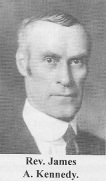
The minister who had the job of building the new church was Rev. James A. Kennedy. He moved here in April 1902 and the Kennedy family have been a part of our church family ever since. The cornerstone of the new church was laid August 9, 1902 and dedication of the church was Easter Sunday 1903.
Meanwhile, the Harvey church remained intact, but abandoned, as there was a difference of opinion between the congregation, the owners of the building, and Mr. Harvey, the owner of the land. Finally, in 1911, Rev. Kennedy and another member, Jay Sutton, purchased the building. They had it torn down and barged it to Sugar Island where it became part of the Kennedy cottages. (In 2008, the Kennedy family donated their cottage back to the church and it is used as a retreat.) Rev. Kennedy resigned in August 1912, but his sons and grandchildren attend church when they are in the area. His family also established the Kennedy Fund; a special fund in his honor that has provided summer camp experiences for our church children since the mid 1960's.
Meanwhile, the Harvey church remained intact, but abandoned, as there was a difference of opinion between the congregation, the owners of the building, and Mr. Harvey, the owner of the land. Finally, in 1911, Rev. Kennedy and another member, Jay Sutton, purchased the building. They had it torn down and barged it to Sugar Island where it became part of the Kennedy cottages. (In 2008, the Kennedy family donated their cottage back to the church and it is used as a retreat.) Rev. Kennedy resigned in August 1912, but his sons and grandchildren attend church when they are in the area. His family also established the Kennedy Fund; a special fund in his honor that has provided summer camp experiences for our church children since the mid 1960's.
THE CHURCH STAYS STRONG
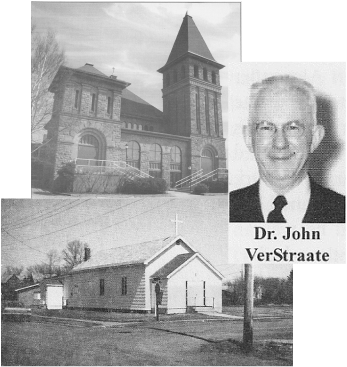
Top-1902 church
Bottom-Chapel
In September 1912, the Rev. Robert A. Bartlett took the position as minister. He remained as our minister until World War I when he enlisted with the YMCA. He remained active in the area until he suffered a stroke in 1926. He passed away in 1927.
The Rev. R. Stanley Brown arrived in 1919. During his time, the Young Ladies Auxiliary and the Presbyterian Guild were formed, both active until their inclusion in the Women's Association in 1948. In 1922 the Men's Club started Scout Troop 5, which is Scout Troop 105 today. This is the oldest operating troop in the Upper Peninsula and they still call our church their home.
The minister with the longest tenure to date arrived in May 1925; Dr. John VerStraate. During his time here the building was modernized with a new heating plant, extensive work on the social hall, and a kitchen in the former coal bin. The Westminster Guild was formed and also later merged into the Women's Association. In 1926 a former Methodist mission was acquired on Greenough Street and became the Presbyterian Chapel. in 1928 a large Austin air chest organ replaced the old pump organ and was dedicated to the memory of Rev. Easterday. The VerStraate years were marked with many changes in the community including the Depression, World War II, and the post war growth. After 24 years at the church Dr. VerStraate retired in 1949. He arrived in 1925 to a congregation of 390 members and left a congregation of 790.
|
Rev. David McClean succeeded Dr. VerStraate in September 1949 and remained until 1959.
During his tenure, a two-story education wing was constructed. In addition, the front porches and steps on Bingham were replaced, and the social hall and kitchen were rebuilt. In 1953 Richard Nelson was hired as Associate Pastor for our church and he also served as the stated supply minister for Dafter, Donaldson, and Neebish Island. A Ladies Aide Society was formed at the chapel during his tenure and the Board of Deacons was dropped in favor of additional members on the Session. Dr. Joseph Blackburn came to the pulpit in April 1960 and under his guidance, the church organizations continued to grow despite the closing of three factories and the general decline of population in the area. In 1964, carillon chimes were added and dedicated to Rev. VerStraate's memory. Dr. Blackburn retired in 1971. Rev. Joseph D. Ryan served as interim from September 1971 until August 1972. 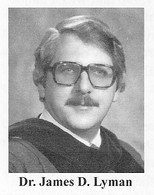
Dr. James D. Lyman joined us September 1972. Like Rev. McClean, he oversaw renovations to the church property. The sanctuary was re-plastered and painted, the social hall was paneled and painted, the kitchen rebuilt, and the Sunday School class rooms refurbished. The Austin organ was rebuilt - costing more than it originally did in 1927. He was instrumental in re-establishing the Board of Deacons and in starting the Honorary Membership program. His wife, Leslie, worked with the youth of the church and helped organize the youth choirs and youth groups. A new sign was placed on Bingham and landscaping was done. By 1979 most of the work was done and he left in November.
We were served by lay ministers through pulpit supply until 1981. |
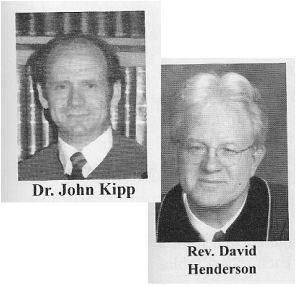
Rev. John Kipp came to the Sault in March 1981. He arrived to find a looming financial crisis in the church, as well as a congregation that was losing membership due to age and no local jobs to keep young families in the area. One of his first tasks was to close and sell the chapel due to the cost of upkeep. Two first floor Sunday School rooms were remodeled and became the chapel for early Sunday morning services. The chapel's Ladies Aide Society joined the Women's Association of the main church. Dr. Kipp left in January of 1987.
The Rev.'s Paul and Nancy Tomlinson followed Dr. Kipp as interims. They served from May 1987 to December 1988.
In December 1988, Rev. David Henderson arrived to take the reins. While serving with our church he was very active in the community; especially with Habitat for Humanity. Like Easterday, he has been considered a "community" pastor doing weddings and funerals when there was no one else. More building renovations were completed during his tenure. The church was made more energy efficient by replacing the furnaces, covering the stained glass windows with a safety storm glass covering, putting on a new roof, and insulating the attic. When he discovered that the Salvation Army did not operate their daily Soup Kitchen on Sundays, he started a Sunday Soup Kitchen at the church. Sadly, this was discontinued during the COVID pandemic of 2020 and the church was not able to restart this mission.
The Rev.'s Paul and Nancy Tomlinson followed Dr. Kipp as interims. They served from May 1987 to December 1988.
In December 1988, Rev. David Henderson arrived to take the reins. While serving with our church he was very active in the community; especially with Habitat for Humanity. Like Easterday, he has been considered a "community" pastor doing weddings and funerals when there was no one else. More building renovations were completed during his tenure. The church was made more energy efficient by replacing the furnaces, covering the stained glass windows with a safety storm glass covering, putting on a new roof, and insulating the attic. When he discovered that the Salvation Army did not operate their daily Soup Kitchen on Sundays, he started a Sunday Soup Kitchen at the church. Sadly, this was discontinued during the COVID pandemic of 2020 and the church was not able to restart this mission.
TRAGEDY STRIKES
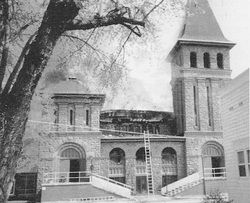
The church burning on May 7, 2000.
Things were looking up - the congregation was slowly growing again, work had started on redecorating the lower education wing and new cabinets had just been installed in the kitchen.
Everything changed Sunday, May 7, 2000.
That tragic day our beautiful 98-year-old church burned to the ground. Following the worship service and soup kitchen, someone spotted smoke coming from the roof. What is believed to be an electrically related fire had started in the attic over the sanctuary and within four hours the entire sanctuary lay in the remains of the basement; the social hall was destroyed beyond repair, parts of the education wing were severely damaged, and the manse next door had exterior damage. Thankfully no one was harmed.
The day of the fire, the congregation, as well as many members of the community, gathered to watch our old friend leave us. Even while the firefighters continued to try to stop the fire, members of the congregation started formulating plans to continue the work of our church.
The morning following the fire, the large safe in the basement holding all of the official church records was found and though many of them were damp, they were rescued. We were also able to save some of the dishes and silver from the kitchen, some of the stained glass windows from the chapel, the daily church records from the office, and some bits of furniture - including the pew from the 1854 church.
The fire and subsequent rebuilding was to prove how many friends our church family has in the community and throughout our Presbytery.
Everything changed Sunday, May 7, 2000.
That tragic day our beautiful 98-year-old church burned to the ground. Following the worship service and soup kitchen, someone spotted smoke coming from the roof. What is believed to be an electrically related fire had started in the attic over the sanctuary and within four hours the entire sanctuary lay in the remains of the basement; the social hall was destroyed beyond repair, parts of the education wing were severely damaged, and the manse next door had exterior damage. Thankfully no one was harmed.
The day of the fire, the congregation, as well as many members of the community, gathered to watch our old friend leave us. Even while the firefighters continued to try to stop the fire, members of the congregation started formulating plans to continue the work of our church.
The morning following the fire, the large safe in the basement holding all of the official church records was found and though many of them were damp, they were rescued. We were also able to save some of the dishes and silver from the kitchen, some of the stained glass windows from the chapel, the daily church records from the office, and some bits of furniture - including the pew from the 1854 church.
The fire and subsequent rebuilding was to prove how many friends our church family has in the community and throughout our Presbytery.
FROM THE ASHES
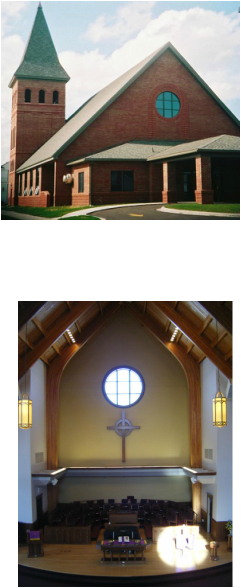
Over the next few months, plans were formulated to rebuild. Many discussions were held and decisions made. Discussions were had over whether to rebuild on the same site or find another. We quickly heard from the community. They overwhelmingly indicated their desire to have our congregation return to the downtown area and "our" corner. The congregation was surveyed to discover their wishes. An architect was selected to begin planning the layouts, and a contractor was hired.
During this time, we were welcomed by our friends at the United Methodist Church, who shared their worship with us for three weeks. In the meantime, a more "permanent" temporary housing situation was found at the First Baptist Church, which welcomed our heart-weary but hopeful congregation into their church home. We moved into our new quarters in June 2000 and gratefully shared the space with our new friends. Though a new experience for both congregations, a wonderful relationship developed that our members will always remember fondly.
Over the next two years, while continuing our church and community ministries, the work of rebuilding got underway: demolition took place on what was left of our church, four houses next to the church lot were purchased and torn down, and a new manse was purchased. A groundbreaking ceremony was held on July 22, 2001. The cornerstone containing a time capsule was officially laid on September 30, 2002. In February 2003, the steeple was attached to the tower, with a large portion of the city in attendance for the sight. During that summer, the interior was finished, and our first service was held in our new church home on August 10, 2003. In late August, items that had been stored all over the city came home.
Insurance proceeds were not enough to cover the entire cost of this new structure, but between active fundraising and generous gifts, we were finding that things were working out. God was finding a way for us to make a new home. Cabinets for the Christian Education wing were donated from a Canadian property owner and rebuilt as needed for each room. Tables and chairs salvaged from the old church were cleaned, repaired, and put in the classrooms. Folding tables and chairs for the social hall were acquired from a service club bingo hall that was going out of business. Much of the kitchen equipment, purchased from an equipment salvage company, was paid for by a grant we received because of our need for the kitchen for a community service - the Sunday Soup Kitchen. A special fundraiser raised enough money to put pews on the first floor of the sanctuary and get the chancel furniture needed. Another fundraiser was organized by the choir, and money was raised to purchase a beautiful electronic organ and choir risers.
On September 21, 2003, the new building was dedicated once again to the glory of God and to proclaim the Gospel of Jesus Christ as the ministry of the First United Presbyterian Church of Sault Ste. Marie, Michigan.
During 2004 and 2005, more work was completed, but we also had a setback. In the spring of 2004, a sprinkler pipe burst and flooded the basement and much of the sanctuary. Thanks to quick action by many church members, the water damage was minimal, and we were soon in full operation again. Later that year, the risers were installed in the balcony, and in 2005, a new cross was donated to the church and hangs proudly at the front of the church.
Rev. Henderson retired in July 2008 after having served as our pastor for almost 20 years.
Upon his retirement, Dr. Richard Bates was hired as our interim pastor. He arrived in October 2008 and served through August 2010.
During this time, we were welcomed by our friends at the United Methodist Church, who shared their worship with us for three weeks. In the meantime, a more "permanent" temporary housing situation was found at the First Baptist Church, which welcomed our heart-weary but hopeful congregation into their church home. We moved into our new quarters in June 2000 and gratefully shared the space with our new friends. Though a new experience for both congregations, a wonderful relationship developed that our members will always remember fondly.
Over the next two years, while continuing our church and community ministries, the work of rebuilding got underway: demolition took place on what was left of our church, four houses next to the church lot were purchased and torn down, and a new manse was purchased. A groundbreaking ceremony was held on July 22, 2001. The cornerstone containing a time capsule was officially laid on September 30, 2002. In February 2003, the steeple was attached to the tower, with a large portion of the city in attendance for the sight. During that summer, the interior was finished, and our first service was held in our new church home on August 10, 2003. In late August, items that had been stored all over the city came home.
Insurance proceeds were not enough to cover the entire cost of this new structure, but between active fundraising and generous gifts, we were finding that things were working out. God was finding a way for us to make a new home. Cabinets for the Christian Education wing were donated from a Canadian property owner and rebuilt as needed for each room. Tables and chairs salvaged from the old church were cleaned, repaired, and put in the classrooms. Folding tables and chairs for the social hall were acquired from a service club bingo hall that was going out of business. Much of the kitchen equipment, purchased from an equipment salvage company, was paid for by a grant we received because of our need for the kitchen for a community service - the Sunday Soup Kitchen. A special fundraiser raised enough money to put pews on the first floor of the sanctuary and get the chancel furniture needed. Another fundraiser was organized by the choir, and money was raised to purchase a beautiful electronic organ and choir risers.
On September 21, 2003, the new building was dedicated once again to the glory of God and to proclaim the Gospel of Jesus Christ as the ministry of the First United Presbyterian Church of Sault Ste. Marie, Michigan.
During 2004 and 2005, more work was completed, but we also had a setback. In the spring of 2004, a sprinkler pipe burst and flooded the basement and much of the sanctuary. Thanks to quick action by many church members, the water damage was minimal, and we were soon in full operation again. Later that year, the risers were installed in the balcony, and in 2005, a new cross was donated to the church and hangs proudly at the front of the church.
Rev. Henderson retired in July 2008 after having served as our pastor for almost 20 years.
Upon his retirement, Dr. Richard Bates was hired as our interim pastor. He arrived in October 2008 and served through August 2010.
